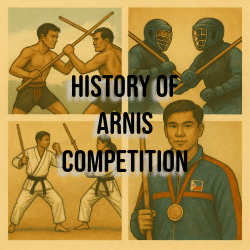The Evolution of Arnis Competitions: From Local Duels to World Championships
Arnis competitions have grown from village exhibitions and duels into national tournaments, world championships, and even the 2019 SEA Games. This article explores how the Filipino martial art evolved into a global sport.



